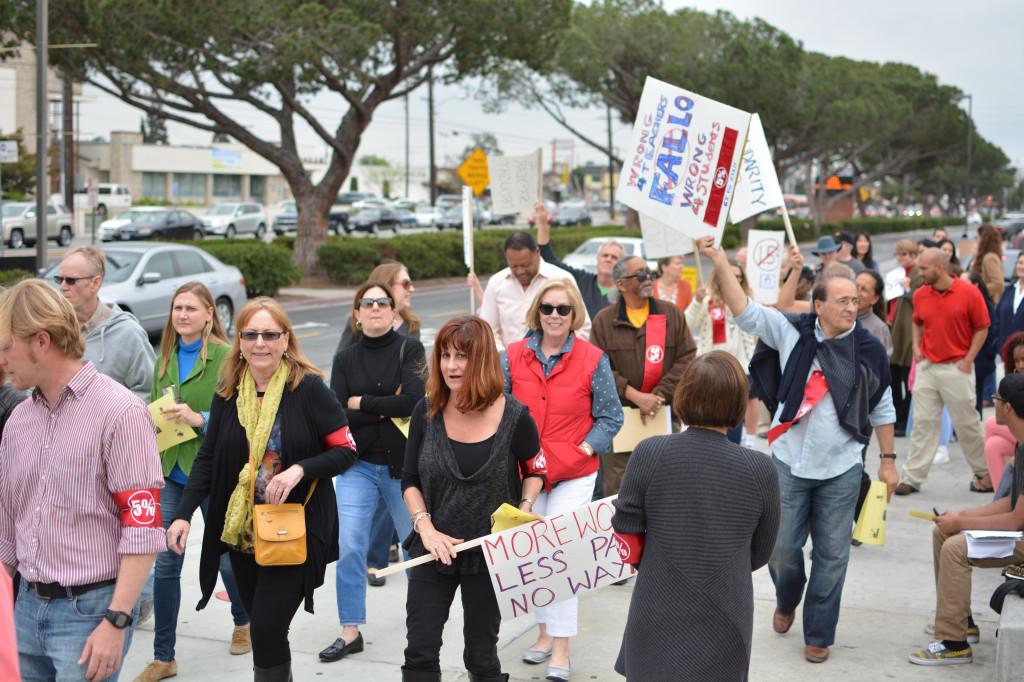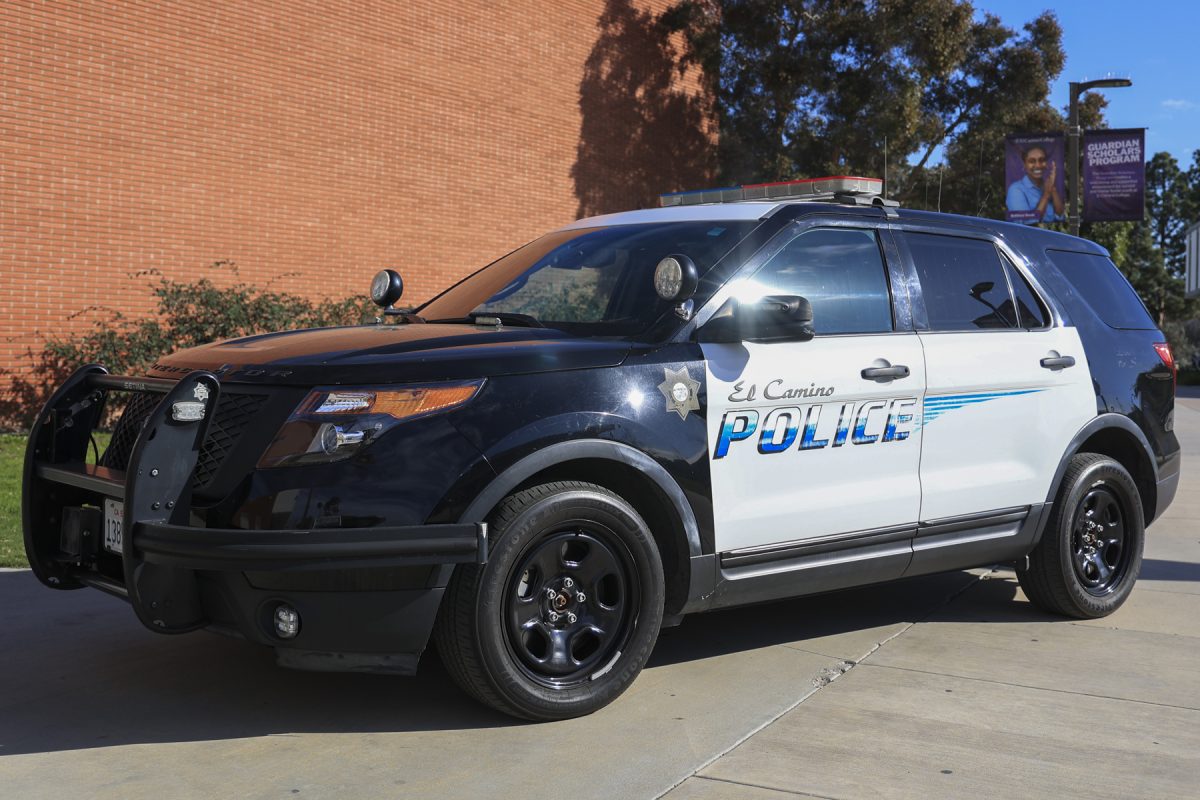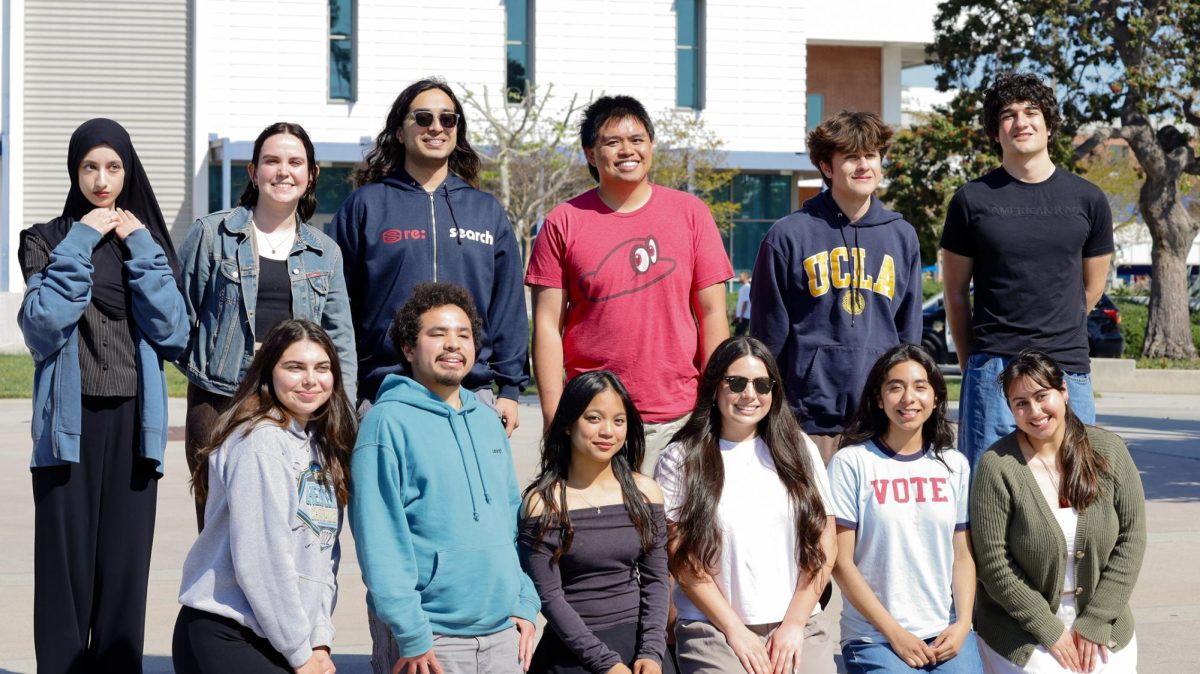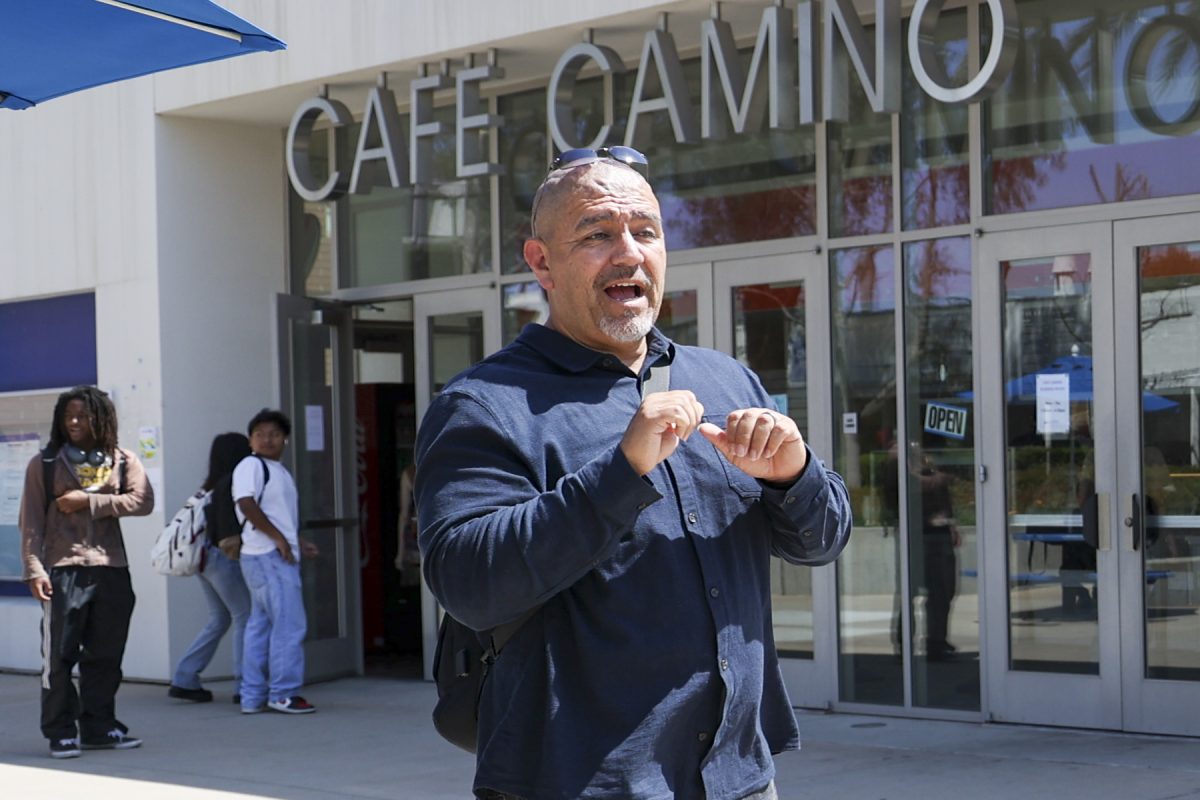Their chants rounded the Administration Building and spilled onto Crenshaw Boulevard, preceding a body of some 50 disgruntled teachers and classified employees. Many carried signs emblazoned with “5%,” a clarion call for the raise they believe is long overdue.
However, even as the El Camino Classified Employees (ECCE) and El Camino College Federation of Teachers (ECCFT) walk in their self-named “Solidarity Marches,” substantive negotiations between the unions and the district remain in contrasting gridlock.
“We had our first mediation meeting March 13,” Luukia Smith, president of the ECCE, said. “The mediator said that neither of us are in a place where we can come together on anything, so we only met for half a day and then left.”
At present, all three groups are still standing by wildly different propositions. The district is proposing a 5 percent raise spread over three years while the ECCFT and the ECCE are negotiating for a 5 percent raise every year for three years and a singular, 6 percent raise respectively.
“While [state] apportionment decreased, the fund balance increased, and so did the president’s salary,” Gary Turner, vice president of political action for the ECCE, said. “Those are the kinds of facts we’re dealing with when you talk about laying out whether [a raise] is sustainable.”
Turner points out that employees got a 3 percent raise in 2007-08, a year before apportionment funds peaked at $111 million before steadily dropping to $104 million in the 2012-13 school year. Despite this salary raise and the subsequent decrease in revenue, in those same years, the district’s ending balance grew from $13 million to $20 million.
“If you want to talk about sustainability, here’s historical evidence that a raise, at the onset of the Great Recession, was sustainable,” he said. “If during that time a 3 percent raise was sustainable, why, with an improving economy and a reserve balance four times what it’s required to be, would you question the sustainability?”
The district, however, views its reserve funds in a wholly different light.
“There is no requirement or obligation to be looking at that ending balance,” Spencer Covert, the district’s chief negotiator, said. “No one says ‘There’s money left over in your checkbook so you have to spend it.’ The only time you’re going to consider reserves is if the district is saying we’re financially strapped and we can’t pay a comparable wage.”
The issue of comparability, how similar positions at similar districts are paid, is central to the district’s position. Covert describes it as the metric by which either side will appeal to the state’s mediators, and if a compromise cannot be reached, the panel that will decide upon a formal recommendation.
“It really doesn’t matter whether a union wants a 5 or 6 percent increase. Because they could just as easily want 10 percent,” he said. “It’s not
what a union wants which will be considered significant. It’s going to be what
salaries do we have, and how do they compare with other neighboring community
colleges?”
However, highlighting what they see as a plentiful reserve isn’t the unions’ only talking point. They argue that their claim to a higher raise is supported by forecasts for increased funding and years of conservative budget estimates.
“We’re already getting more apportionment money this year than we did last year and the economic forecast is improving daily,” Turner said. “The state now has $965 million, almost a billion,
more than they forecasted they would have. That’s on top of them
already anticipating extra money.”
In the upcoming years, that sort of increased revenue will come to represent the norm and not the exception, he said.
“The Legislative Analyst’s Office put out a report at
the end of February which forecasts, on average, a 7 percent growth for the
next four years in state revenues,” Turner added. “By virtue of Prop. 30, a percentage of those increased revenues have to be funneled to education.”
While the unions point toward encouraging news for the future, the district still has a few qualms about the claims they’ve heard made about the past.
“The faculty continue to be paid automatic step
increases. Last July, there were 118, a little over
one-third of the faculty received an automatic percentage increase,” Covert said. “There’s a difference between saying 64 percent
of teachers haven’t received a raise and saying nobody has received a raise.”
Those automatic step increases, a means for the district to reward employees for their continued loyalty and work, amount to increases between 2.2 and 3.45 percent.
“You’re not being prudent if you say that on top
of that, we’re spending another 5 percent increase,” Covert said. “Because where you’re
getting 1.5 percent more money, you’re going to be increasing someone’s salary
by as much as 8 percent. That’s not prudent and it’s not comparable.”
Through the opaque fog of opposing evidence, claims, and sometimes accusations, it seems there’s only one thing everyone can agree to: they’ve been stuck for quite some time.
“My feeling is that if we can’t, in two meetings of mediation, have conversation to work something out, then I think we say ‘mediation isn’t working’ and the next step is fact-finding,” Smith said.









